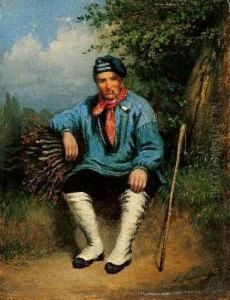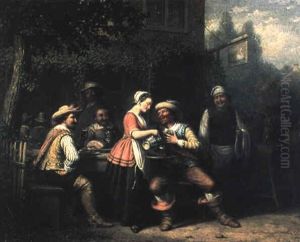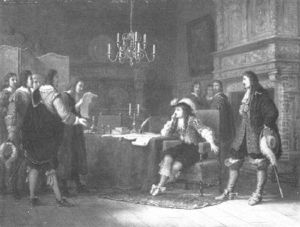Andries Scheerboom Paintings
Andries Scheerboom was a Dutch artist born in 1816 in Amsterdam. He was known for his works in the Romantic style of painting, which was prevalent in the early 19th century. Scheerboom's works often depicted historical scenes, landscapes, and genre paintings that included figures in traditional Dutch attire engaged in daily activities. His paintings were characterized by a meticulous attention to detail and a rich use of color, which helped to convey the mood and atmosphere of the scenes he portrayed.
Scheerboom trained at the Royal Academy of Fine Arts in Amsterdam, where he developed his skills under the guidance of prominent Dutch artists of the time. The Royal Academy was a hub for young artists to learn from established masters and gain exposure to the latest artistic trends. Scheerboom's education there provided him with a solid foundation in the techniques of painting and an understanding of the Romantic aesthetic that would come to define his career.
Throughout his lifetime, Scheerboom's work was well received, and he exhibited at various art shows, including the annual Exhibition of Living Masters in the Netherlands. His paintings resonated with audiences due to their evocative portrayal of Dutch history and rural life. Scheerboom captured the imagination of his viewers, allowing them to glimpse into the past through his romanticized lens.
Despite his success, Andries Scheerboom was not as well known outside of the Netherlands, and his work did not have the same international reach as some of his contemporaries. Nevertheless, within his homeland, his contributions to the Dutch Romantic movement were significant, and his paintings remain a testament to the rich cultural heritage of the Netherlands.
Andries Scheerboom passed away in 1870. Today, his works can be found in various Dutch museums and private collections. They continue to be appreciated for their historical value and their beauty, serving as a window into the Romantic era of Dutch art.




















